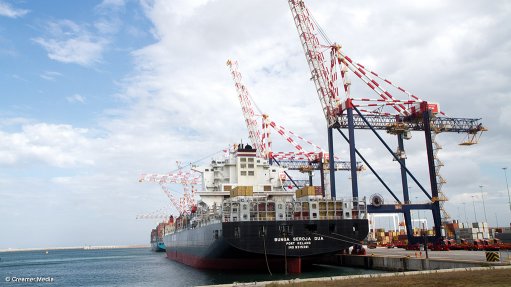
Photo by: Duane Daws
Transnet Port Terminals (TPT) was looking to position South Africa as a southern hub for world shipping routes within the next ten years, TPT KwaZulu-Natal operations GM Zeph Ndlovu told Engineering News Online on the sidelines of the Africa Ports & Harbours conference on Tuesday.
He argued that the country was well positioned to be a port of call for trade between the West and the East, pointing out that it currently took a ship 27 days to travel through the Suez Canal between China and Brazil, while the Cape route only took 22 days.
“So you can cut that transport time by five days, and that is the advantage,” he stated.
He added that South Africa was also well positioned to take advantage of growing south-south trade.
Ndlovu further pointed out that, while there were issues of security along the northern trade routes, South Africa was patrolling the Indian Ocean and ensuring that the trade route was clear of the “eventualities of piracy”.
“We have rolled out [the International Ship and Port Facility Security Code] as early as 2002, and interact with the coastguards of the US and Europe, South America, Asia and Australia [among others] to make sure that we keep our ports as safe as possible,” he said.
Ndlovu noted that TPT believed that the Port of Ngqura, which was currently being expanded, would be pivotal as a hub for international trade vessels, stating that, from Ngqura, the hub could then be extended to adjacent ports.
He said the ports operator promoted this new trade route through conferences, while also engaging with shipping lines through the South African Association of Ship Operators and Agents.
Meanwhile, TPT was also planning to expand its port management services into other African countries, such as Kenya, Ghana and Namibia.
Ndlovu noted that the ports operator had already provided a cargo handling system to the Port of Walvis Bay, in Namibia, which was performing well.
“We have the competencies [that these countries require] and we are saying, let’s look at alliances, let’s look at collaboration,” he stated.
He explained that the main aim of this collaboration was to create synchronised economic stimulus for Africa.